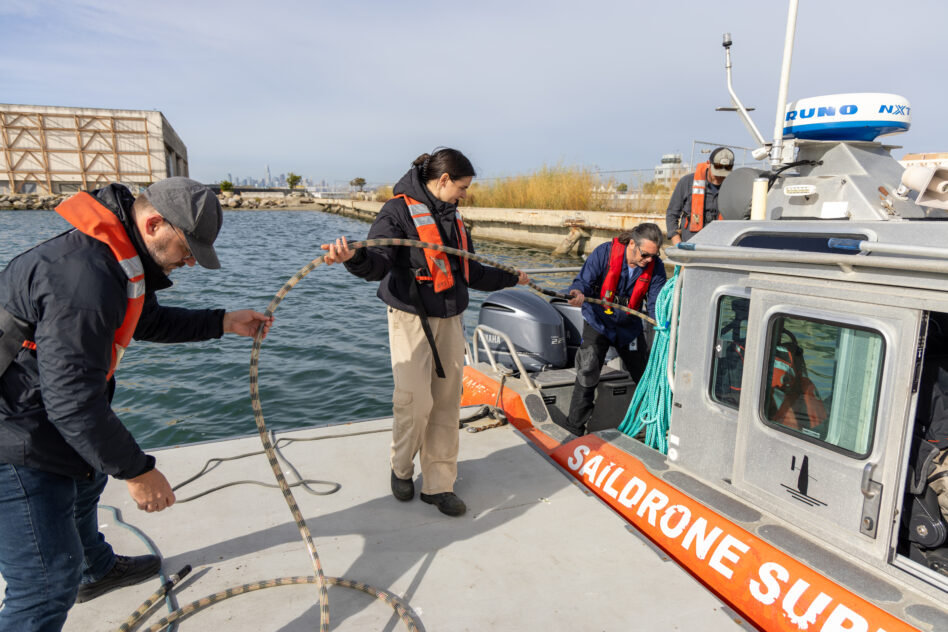We told you maritime autonomy was all the rage. This morning, USV company Saildrone announced that it has successfully integrated Australia-based Thales’ BlueSentry undersea surveillance system onto its unmanned Surveyor vessels. AUKUS for the win.
The partnership—funded by the Office of Naval Research (ONR)—greatly expands the Surveyor’s deep sea awareness, critical for monitoring threats from submarines, torpedoes, and UUVs. And it works: Surveyor vessels equipped with BlueSentry have now demonstrated that they can provide real-time maritime domain awareness (MDA), even on super-long journeys.
Silent but deadly: Saildrone’s Surveyor model is 65 feet long and weighs about 15 tons, making it the largest autonomous vessel in operation anywhere around the world. The mega-sea drone was designed with a suite of advanced sensors, radar, and cameras for ocean mapping.
It’s also super-quiet, which makes it great for surveillance. And, because it’s wind- and solar-powered, it can stay at sea longer than any other USV on the market, according to the company.
Their super-sneaky nature also means they don’t interfere with Thales’ BlueSentry. That system:
- Uses an acoustic sensor technology to identify underwater threats like submarines, which wouldn’t work with a loud, motor-powered boat.
- Works using a towed array, which is essentially a long cable with microphones placed along it that listens for signs of underwater vessels, including motor noise.
Saildrone’s onboard sensors and BlueSentry both provide real-time data to operators via Starlink and Iridium satellite comms.
Out at sea: In tests off the California coast, the BlueSentry-equipped Surveyors operated continuously for 26 days with over 96% uptime. For the uninitiated among us, that means that for the 26 days Surveyor was chugging along at sea, BlueSentry was collecting and delivering deep sea data over 96% of the time.
“The extreme endurance of the system allows us to put eyes and ears in places that were previously out of reach, at a cost point orders of magnitude below traditional manned surveillance platforms,” Saildrone CEO Richard Jenkins said in a statement.

